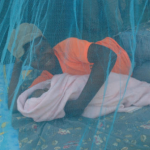Health officials have raised concerns over significantly higher HIV prevalence rates among sex workers and men who have sex with men (MSM) in certain counties, compared to the general population. According to health data reviewed, this disparity is observed across 24 counties.
For example, in Garissa County, where the general population HIV prevalence is 0.17 percent, approximately 18 percent of female sex workers (FSW) and 10.6 percent of MSM are living with HIV. Similarly, in Wajir County (general prevalence 0.16 percent), HIV prevalence among FSW is 18.8 percent and among MSM is 9.9 percent.
In Kiambu County, with a general HIV prevalence of 2.27 percent, the rates are notably higher among FSW (19.5 percent) and MSM (18.6 percent). Nairobi County, with a general population prevalence of 4.3 percent, shows even higher rates among FSW (23 percent) and MSM (28 percent).
These figures, compiled from 2021 routine program monitoring data, highlight specific epidemic and transmission dynamics at a subnational level. The goal is to better tailor response efforts to these specific populations. Similar trends are observed in several other counties including Baringo, Bomet, Elgeyo Marakwet, Tana River, Isiolo, Laikipia, Lamu, Machakos, Makueni, Mandera, Marsabit, Trans Nzoia, and Uasin Gishu.
“Twenty-four counties were grouped into the concentrated epidemic type due to their low prevalence in the general population, high prevalence in key populations and relatively higher density of female sex workers and men who have sex with men populations,” the researchers have said in their report, published on July 10.
A concentrated HIV epidemic occurs when HIV spreads rapidly within specific subpopulations but does not extensively affect the general population. Dr. Ruth Masha, head of the National Syndemic Diseases Control Council (NSDCC), and researchers from the National AIDS and STI Control Programme (NASCOP), alongside experts from the Global Fund, Partners for Health and Development in Africa, and the Institute for Global Public Health at the University of Manitoba, Canada, authored a recent report highlighting this distinction.
The report identifies four counties in Kenya as experiencing a generalized HIV epidemic, where most new infections arise from heterosexual contact within the general population. In contrast, the remaining 19 counties exhibit mixed epidemics, indicating diverse patterns of HIV transmission across different populations.
Published in the Journal of the International AIDS Society, the report emphasizes the need for tailored responses to HIV based on local epidemic dynamics and identified programmatic gaps.
Titled “A sub-national HIV epidemic appraisal in Kenya: a new approach for identifying priority geographies, populations and programmes for optimizing coverage for HIV prevention,” the study underscores the importance of addressing specific gaps in HIV prevention, treatment, care, and support services.
The researchers assert that a uniform approach to HIV response is ineffective in Kenya. They advocate prioritizing programs based not only on disease burden and epidemic type but also on addressing existing gaps in coverage to reduce disparities. They highlight ongoing efforts to implement a combination of prevention strategies tailored to each county’s epidemic profile.
For example, from October to December 2021, key population programs achieved coverage of 91% for an estimated 197,096 female sex workers (FSW), all estimated 61,650 men who have sex with men (MSM), and 83% of an estimated 27,056 persons who inject drugs (PWID). Notably, counties with concentrated epidemics reported the lowest contact coverage for these key populations, indicating challenges in reaching them effectively.
Furthermore, the report acknowledges the likelihood of underestimating the MSM population in Kenya, underscoring ongoing difficulties in accurately assessing and responding to HIV risks among key populations nationwide.



